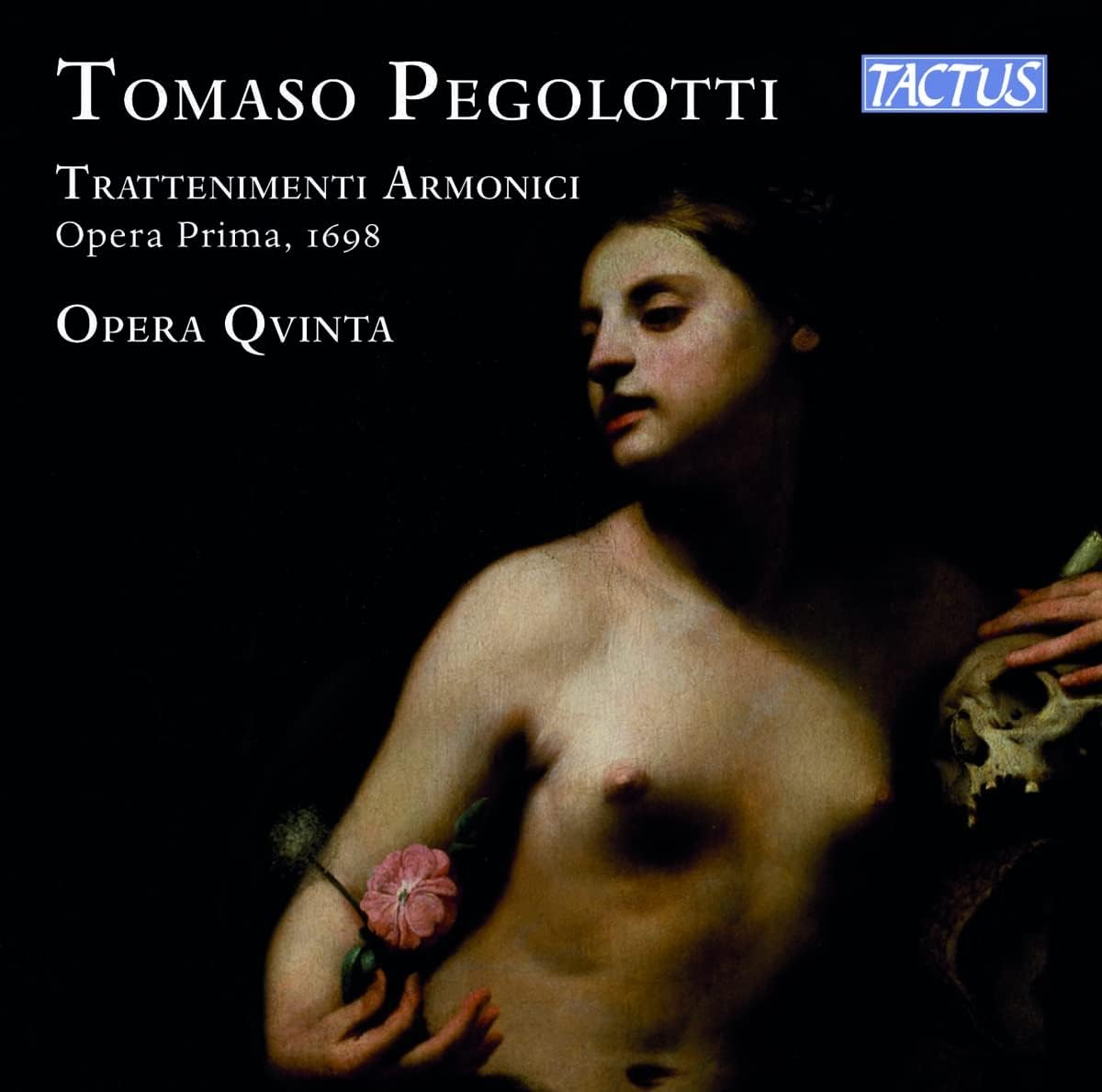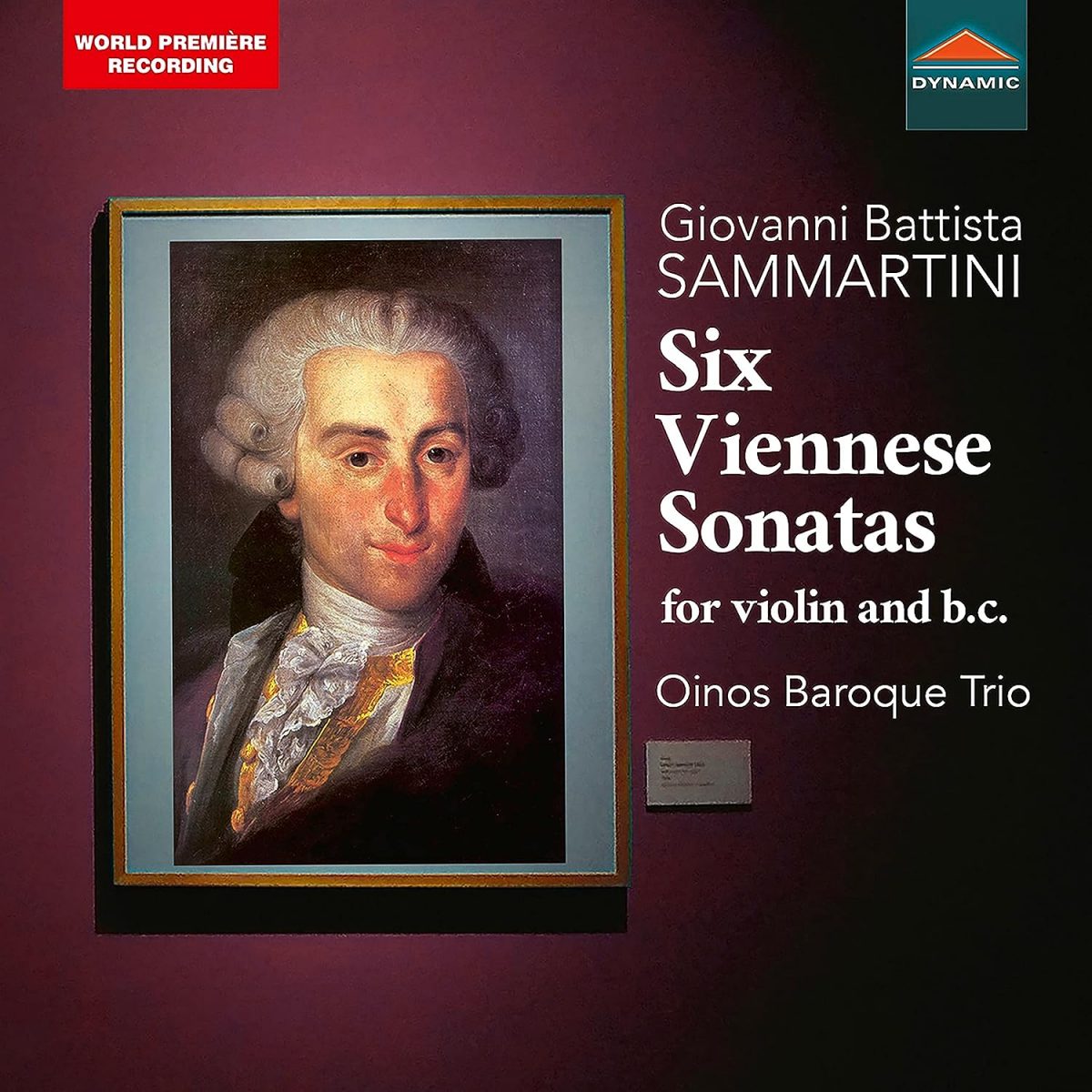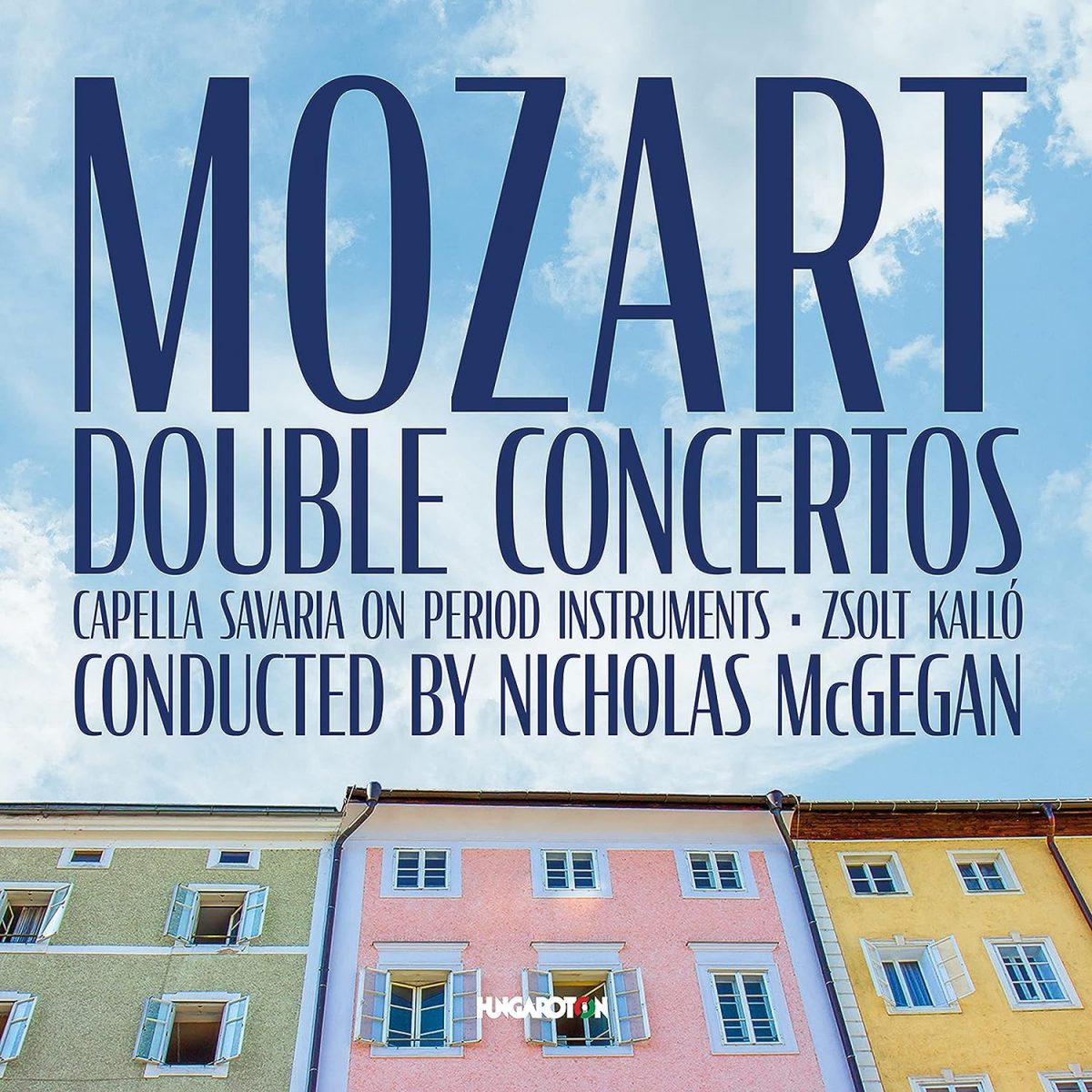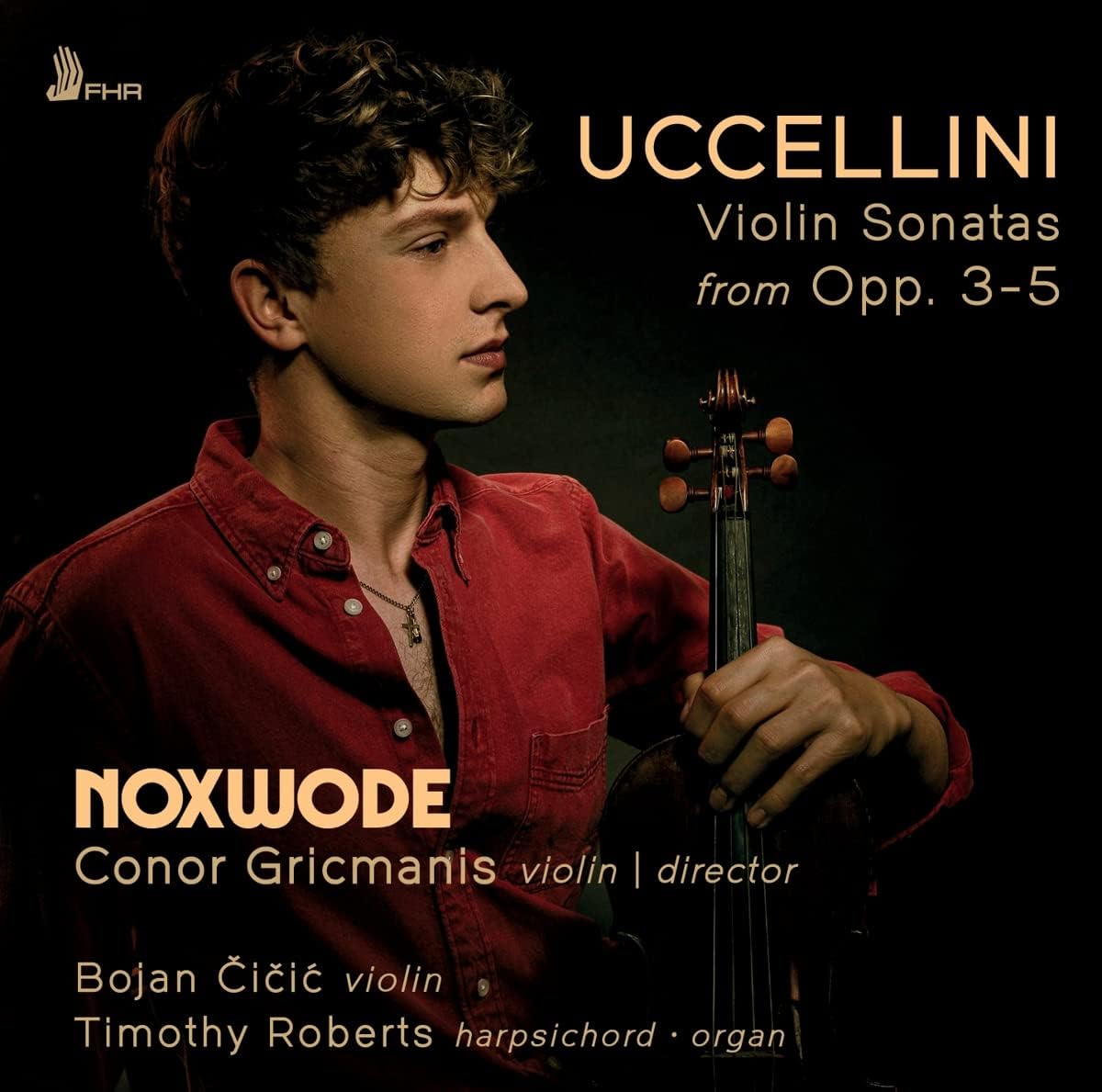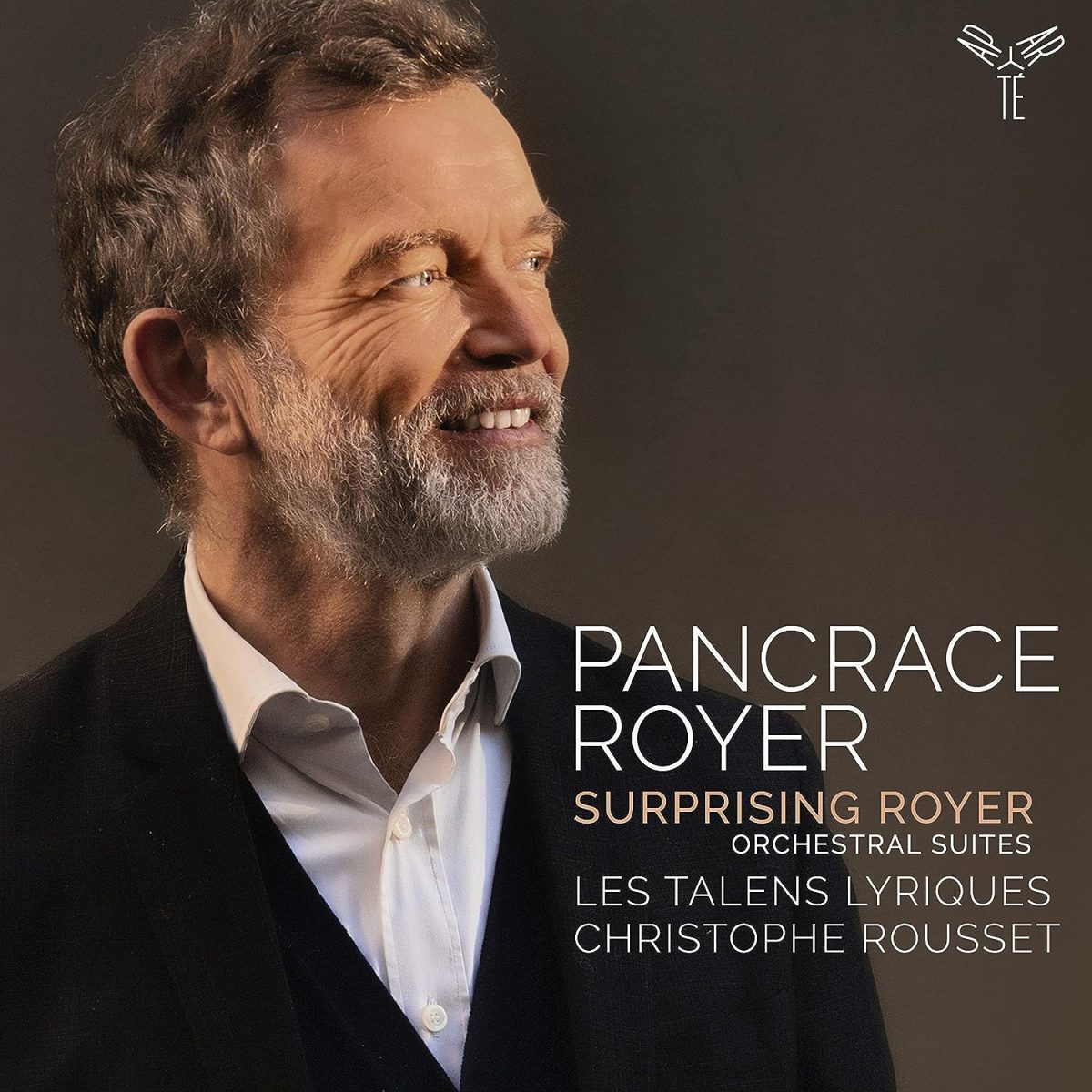Opera Qvinta
79:35
Tactus TC 661604
Tomaso Domenico Pegolotti was born and spent his life in the small town of Scandiano in Regio Emilia, famous mainly for parmesan cheese but also a notable centre for the arts. The twelve Trattenimenti Armonici printed in 1698 is an eclectic collection in a variety of musical forms and styles and making considerable demands on the solo violin, suggesting that Pegolotti was something of a virtuoso. The present recording presents the pieces in a variety of instrumentations using the group’s cello, theorbo, organ and clavicembalo, although the main focus is necessarily on the solo violin line, played by the group’s musical director Fabrizio Longo. Although the violin sound is occasionally a little pinched, and at the ends of some tracks we are aware of some background hiss, Longo plays with confidence and musicality, ornamenting appropriately and tastefully and finding the essence of these engaging pieces. As a result of his established position in his home town and his contacts with the wealthy local aristocracy, Pegolotti’s Trattenimenti were published as part of what was clearly envisaged as a cumulative body of printed work. Sadly, this project remained unrealised as the composer, who already divided his time between music and law, was increasingly lured by circumstances into the latter sphere. Local politics and the law may have benefited, but music undoubtedly lost a promising musician, who might have gone on to make a distinctive contribution to the melting pot of Italian music at this crucial time.
D. James Ross
